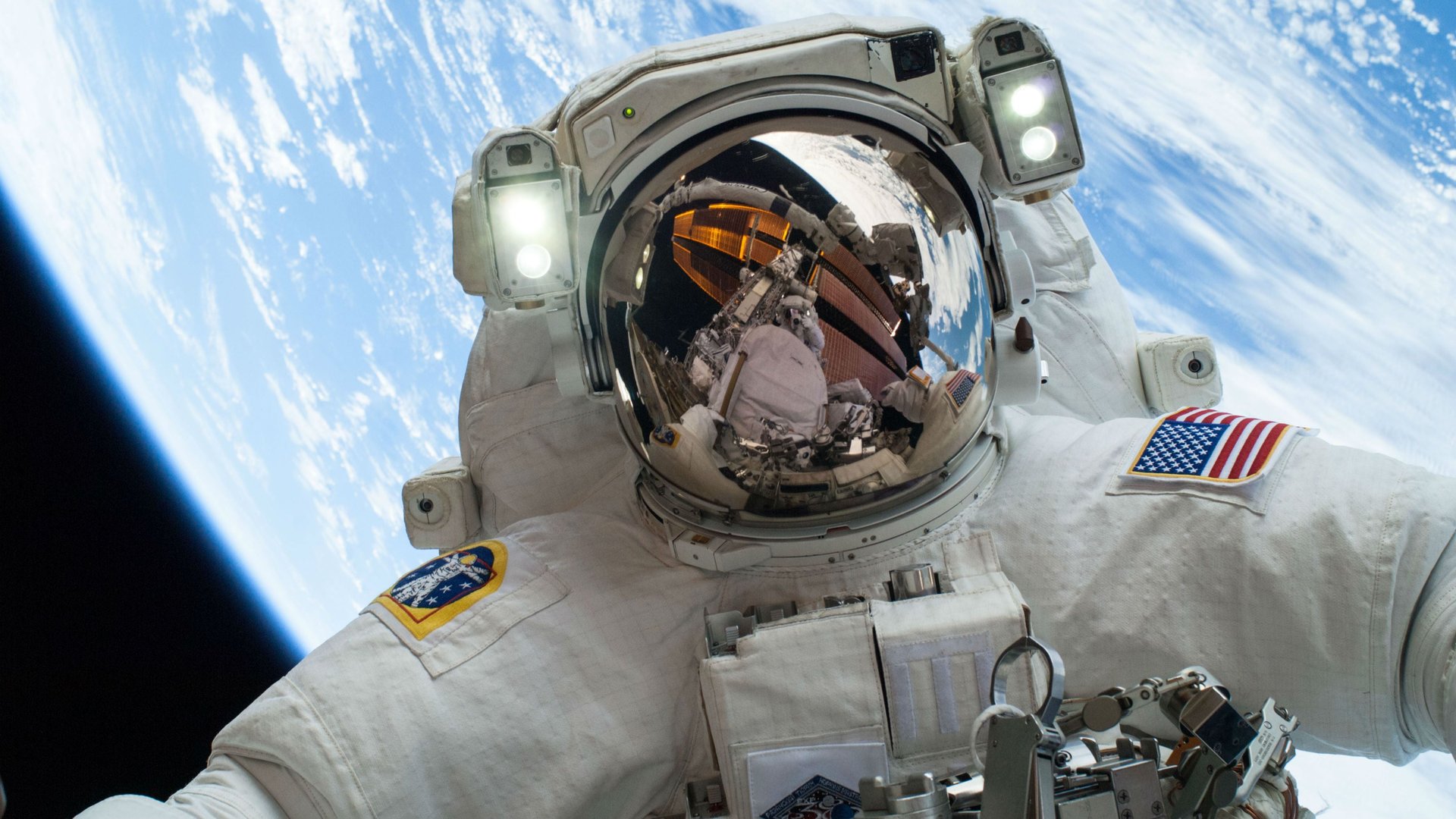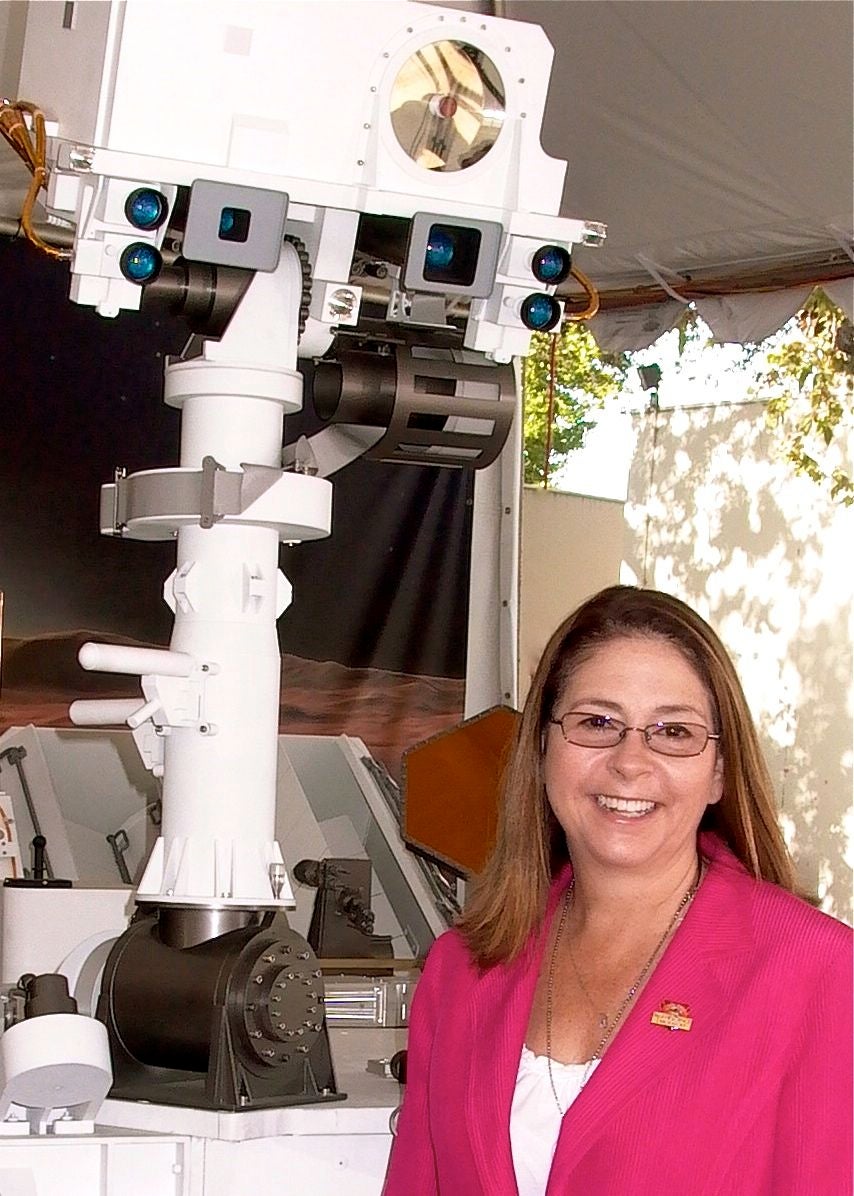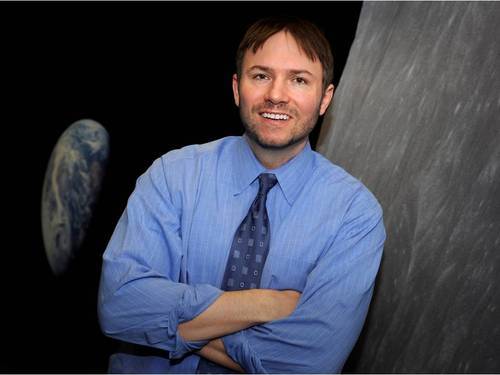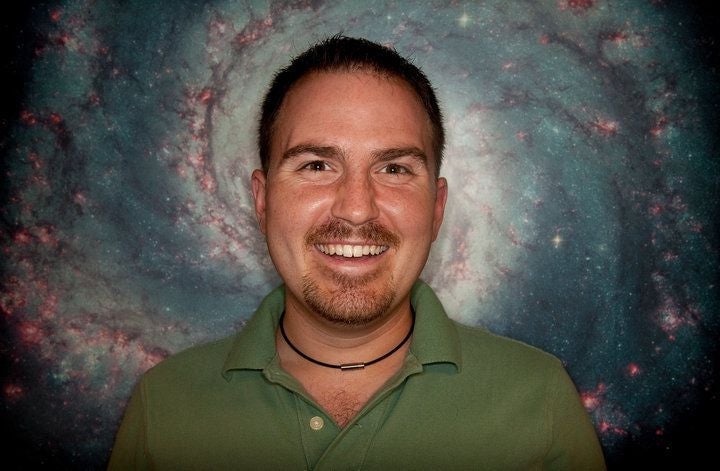How a bunch of government space geeks at NASA won the internet
In an era when the media whips itself into a frenzy over how to make things go viral, and marketers take their cues from big brands, a government entity has quickly and quietly become the darling of the internet.


In an era when the media whips itself into a frenzy over how to make things go viral, and marketers take their cues from big brands, a government entity has quickly and quietly become the darling of the internet.
Those searching for proof need look no further than this week’s Pluto flyby. After a 3-billion-mile (4.8-billion-km) journey that spanned nearly 10 years, NASA’s New Horizons spacecraft reached Pluto and snapped the most detailed images of the dwarf planet ever taken—and the internet went bananas. NASA previewed one photo directly to Instagram, where it generated over 100,000 likes in only a few minutes. The New Horizons team’s “Ask Me Anything” skyrocketed to the front page of Reddit. If you were connected to the internet around 9am US eastern time on Tuesday, July 14, your Facebook, Twitter, Instagram, and other social platforms were all Pluto, all the time.
How exactly NASA stumbled upon perhaps the greatest social-media strategy of our time is a story of both blind luck and shrewd management. Of course, the space agency benefits by having amazing pictures, videos, and discoveries to share. Its content transcends demographics and platforms, because it highlights precisely what makes us so human. But its success also contains important lessons for any large organization trying to understand how to break down the barriers between itself and its public.
And the NASA social behemoth wasn’t always a behemoth. Like Earth, and the universe itself, it started from very humble beginnings.
The first personality in space
The year is 2008. Newspapers are folding left and right. Science reporting is a dying profession. It’s May 25, the Sunday of Memorial Day weekend in the US, and people are getting ready to drink beers by the grill, not at all concerned with the Phoenix lander about to touch down on Mars 170 million miles away. Veronica McGregor, the head of communications at NASA’s Jet Propulsion Laboratory (JPL) in Pasadena, California, needs to figure out how to get as many people as possible to notice that man is placing a large piece of machinery on an alien world after a 422-million-mile journey through space.

“Somebody had heard about ‘Twitter,’ and I said, perfect,” McGregor, a former CNN producer, told Quartz. ”At the spur of the moment I decided I would tweet as the lander in the first person.”
Atmospheric entry has started. time to get REALLY nervous. Now I’m in the “seven minutes of terror.”
Peak heating will hit in 40 seconds. The heat and energy generated during atmospheric entry would be enough to power 280,000 homes.
parachute must open next. my signal still getting to Earth which is AWESOME!
parachute opening is scariest part for the team.
parachute is open!!!!!
come on rocketssssss!!!!!
I’ve landed!!!!!!!!!!!!!
Cheers! Tears!! I’m here!
Today, seven years after Phoenix tweeted from the Red Planet, @NASA is the 104th most popular Twitter account in the world, with over 11 million followers. The next-nearest US government entity, the White House, has only 6.5 million (though president Barack Obama’s personal account boasts 60 million). NASA also has over 11 million followers on Facebook and 3.5 million on Instagram. The Department of the Interior, whose stunning wildlife and nature pictures make it the only government agency with cool visual content to rival NASA’s, has just 654,000 Instagram devotees.
The masters of this social-media universe are John Yembrick and his deputy, Jason Townsend. Both are veterans of other government agencies. In addition to being the sole tweeters from NASA’s flagship account, the pair oversee 500 other accounts on 12 different social-media platforms and coordinate the other managers across 10 field centers. It’s a cosmic operation.
NASA has always been about keeping the public in the know. According to the Space Act, which established the agency in 1958, NASA is charged with providing for ”the widest practicable and appropriate dissemination of information concerning its activities and the results thereof.” ”Social media is just the latest chapter in us trying to accomplish that mandate,” Yembrick told Quartz. “We have a voice now that we didn’t before.”

Finding that voice, at least initially, was an accident. McGregor’s pathbreaking decision to tweet as the voice of the Phoenix lander was borne out of necessity. Tweeting “I’m” instead of “The Spacecraft is” allowed her to pack more information into Twitter’s 140-character limit.
But McGregor was also establishing a tone—a web presence, like that of a media personality or celebrity. The result was something she hadn’t necessarily intended. Phoenix landing on Mars was cool, sure, but all anyone wanted to talk about was Phoenix’s Twitter account.
“I was a little worried that the space community would think that was silly, but the minute I did a tweet in the first person, suddenly all these people started writing back,” she said. McGregor appeared in the New York Times, CNN, the Washington Post, and even gave an interview to Wired as the Phoenix lander’s persona. It was so early in Twitter’s days that Wired, a tech magazine, still couldn’t say “Twitter” without clarifying that it was a “microblogging website.”
The earnest, fun-loving Phoenix went viral when ”going viral” was something only cute pandas, cats and babies did. It only had about 10,000 followers at the time, but that was good for 30th-most-followed in the world (paywall) and was more than triple the number it had only a week before. It still has 305,000 today even though the Phoenix mission officially ended almost seven years ago.
Phoenix’s voice was especially remarkable for 2008. Back then, the major companies that even had Twitter accounts used them mostly to rehash automated press releases they had already posted elsewhere. Only a handful of celebrities were on Twitter—senator Barack Obama, Britney Spears, Snoop Dogg, Stephen Colbert—most using it in hilariously mundane ways. “Learning about this fascinating site,” said William Shatner in his first tweet, in June 2008. “…is in Turkey,” said rapper 50 Cent a few months later.
Today, if you’re on Twitter, or Facebook, or even Vine, you’re reading (or watching) about NASA projects. If you’re on Snapchat’s “Discover” feature, you’re learning about NASA’s missions—even though the agency doesn’t yet have its own account. That’s pretty good for an organization whose loose social media strategy is to be as ubiquitous as space itself.
The power of personal storytelling
Of course, there’s one fundamental advantage NASA has over everyone else: Awe.

On social media, people share things that make them feel really big, crazy feelings. Look at this awesome or amazing photo. Watch this incredible video. Read this astonishing essay. You can find awe in a lot of different places—music, film, sports, someone’s cat, perhaps—but space offers one of the largest repositories of awe there is. ”We’re very fortunate to be blessed with amazing content,” Townsend said.
Yet even with such awesome things to share, NASA wouldn’t go viral if it operated like every other faceless, inaccessible government organization. You can’t provide the “widest practicable dissemination” of your activities if you’re holding your cards close to the vest. So, following McGregor’s lead with Phoenix, NASA began to develop its most powerful tool for engaging broad audiences globally: an irresistible online identity.
Many—not all—of NASA rovers and space probes speak in the first person on social media. (McGregor noted that the Mars Spirit and Opportunity rovers do not, and as a result never accumulated the same type of following; their joint Twitter account has only 327,000 followers, to the almost 2 million of their younger sibling, Curiosity.) The New Horizons spacecraft has also been tweeting in its own voice during its recent rendezvous with Pluto:
This personal voice gets at the heart of how social media function: They make people care. NASA’s probes have (or rather, appear to have) wants and desires and goals, and that makes us invested in their successes. Before social media, NASA fulfilled its Space Act mandate by getting people interested in the science and discovery of its missions. But being interested in New Horizons’ journey to Pluto is not the same as genuinely caring about the flying piece of space junk. And when we care, we share.
Another important reason NASA’s voice on social media is so effective because it’s really a symphony of different voices—meaning it uses social media the way we all do. Many of the NASA staff who operate social accounts will anthropomorphize satellites, space probes, telescopes, and rockets. But fans will be surprised to discover that they do so at their own discretion.
“We don’t try to dictate what that voice is,” said Yembrick. Oftentimes, account managers will elect to strike a similar tone to McGregor’s Phoenix lander—fun, lighthearted, enthusiastic. But others choose a more subdued tone. The Orion spacecraft (@NASA_Orion), which may someday bring human beings to Mars, is eager, but slightly more authoritative than playful, for instance. Messenger, which ended its 11-year mission by crashing into the surface of Mercury in April, went out on a sad, but resolute note:
“We’re really here to tell a story,” Townsend said. “That’s the constant in what we do.” The imagery is stunning, but it wouldn’t have nearly the same effect if its disseminators weren’t experts at adding context, developing narratives, and heightening suspense.
NASA’s army of helpers
Today, those storytellers include two other groups of people: astronauts, and NASA’s most loyal fans.
NASA astronauts started tweeting from space in 2009, when Mike Massimino (@Astro_Mike) flew aboard the last space shuttle mission to service the Hubble telescope. The agency has never compelled them to use social media and doesn’t give them formal training in it (though specialists on the ground help with spell-checking, formatting, verifying URLs, and so on). But nothing is ghost-written or embellished. All of the astronauts write their own posts and take their own pictures. ”They want to go and connect with the public,” Townsend said.
Then came Canada’s Chris Hadfield (@Cmdr_Hadfield) and his goofy antics aboard the International Space Station (ISS) in 2013. You might remember his rendition of David Bowie’s “Space Oddity,” which has 26 million views on YouTube:
Another of today’s stars is Scott Kelly, who’s currently aboard the ISS as part of his #YearInSpace.
Today, Yembrick says there are 48 astronauts on social media (33 of whom are NASA’s) and nearly all who visit the ISS are tweeting, ‘gramming, and even Vine-ing their expeditions. The human connection is key to what makes this popular: When Terry Virts shows us groundlings his view of a beautiful aurora, we’re seeing what he’s seeing in that moment.
Unsurprisingly, the agency has also attracted a throng of super-fans—groupies, if you will. And it has worked them into its social-media strategy in a savvy way.
Shortly after launching the Phoenix lander account, McGregor organized the first “Tweetup” for the account’s followers, for them to mingle with NASA staff and each other at JPL. People from all around the world applied, and all 130 slots were filled within an hour.
The Tweetups are now called NASA Socials, and are heavily oversubscribed. Most events hold anywhere from 20 to 200 people. NASA says selection is not random: Preference is given to those who “actively collect, report, analyze and disseminate news on social networking platforms.”
But those who get in are given VIP treatment. ”The kind of access we give fans for these events are at the level of what we’d give a US senator,” McGregor said.
The groupies have become invaluable allies to NASA’s communications team. When the US government shut down for two weeks in October 2013, NASA’s public affairs office stopped operating. The alumni of the NASA Socials created the hashtag #WhatNASAMightTweet and then did exactly that, keeping NASA affairs illuminated on the web while the government went dark.
They’re also handy for another job: pest control. NASA attracts trolls who trumpet the same refrain over and over: The agency is a waste of precious taxpayer dollars and doesn’t do any good for the people here on Earth. McGregor says that she and her colleagues rarely have to engage with such trolls, because an army of volunteer space nerds willingly does that for them.
“Some people aren’t going to believe us as much as they’re going to believe members of the general public,” McGregor said. “In some ways, I think they’re able to convince the skeptics better than we ever could.”
Nonetheless, NASA is careful to tailor its web output not to its most earnest followers, but to the general public. ”You’ll never really see us use the term ‘EVA’, or extravehicular activity,” Townsend said. “We’re going to use the term ‘spacewalk,’ because that’s what everybody knows.” That isn’t just well-meaning egalitarianism: By packaging stories that it thinks the general public will be interested in, NASA knows it’s also attracting enterprising journalists who want to tap into that huge audience. “[The media] is an audience you can’t take for granted,” Yembrick said. “The media is the public. Our audience is humanity.”
The downside to having an audience of “humanity” is that serving it requires a galactic effort. McGregor said her job managing social media at JPL has her busier than she ever was as a field producer for CNN. Both Yembrick and Townsend, too, cite the sheer volume of posts, and the challenge of coordinating so many different accounts, as the two toughest parts of their jobs.
Lucky for them, the universe is an endless sea of mystery, and NASA commands its search vessel. The intrigue of space will never go away. “Even though we have a large following, those numbers seem small to us,” Yembrick said. When you have a target audience of 7 billion, there’s still a lot of room to grow.